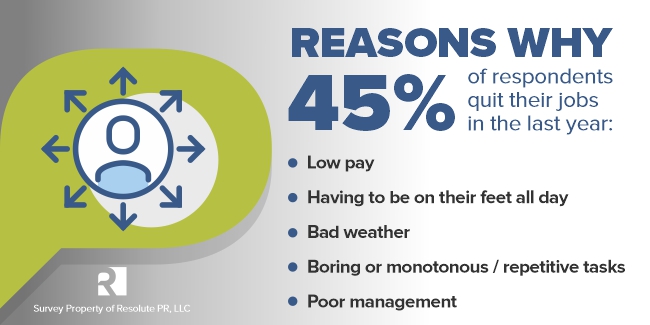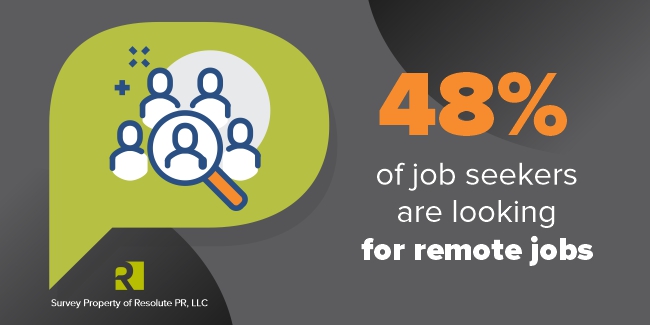Why aren’t people applying for jobs?
In the wake of quiet (or not so quiet) quitting and endless “now hiring” signs, employers are looking to get to the root of today’s hiring crisis.
If your company continues to have job vacancies you’re trying to fill – you aren’t alone. It’s no secret that over the past few years, the job market has undergone massive changes. From low salaries to a lack of flexibility in office hours, today’s workforce is demanding more from the workplace.
While some companies aren’t meeting the needs for livable wages and crucial benefits, the majority of businesses are just having trouble with marketing the job. The value of a job can be lost in lofty experience requirements, vague descriptions and missing benefits. Applicants can also miss out on critical information on the company’s website, which should house inspiring information, such as missions, values and goals.
So, for those who are currently unemployed, why aren’t they looking for work? Why are we seeing declining job application numbers?
At Resolute, we commissioned first-party data to answer these exact questions. We surveyed over 500 people on why they are – or are not – currently looking for work. Let’s dive in. Here are four recommendations for you to follow to boost your applicant pool.
1. Review outdated policies
Our research shows that resistance to update policies and adapt to employee expectations are a significant factor influencing both job hiring and retention. Many employers that continue to operate within an outdated framework will miss the mark and not appeal as an employer of choice.
Importantly, 45% of people surveyed quit their job in the last year. Looking for reasons why? Check out the chart below.

These poor policies could include topics such as PTO, lack of support for mental health, lack of DEI initiatives or inflexible work schedules. Additionally, caregiving and childcare responsibilities are top reasons why people aren’t looking for work – at least urgently.
One of the cardinal rules of public relations and is to genuinely and continually listen to what your target wants and values. Just because a policy, process or procedure worked for your employees in the past, doesn’t mean it works for the workforce of today. Societal and technological landscapes constantly change, and you don’t want to be left in the dust. As these work environments change, employees’ expectations regarding benefits and workplace culture evolve. Modern policies that support a strong work-life balance and employee well-being are critical to successfully attract and retain a talented workforce.
2. Eliminate barriers to work
Of all unemployed respondents, 61% noted a responsibility of being a caregiver for children or another family member as the reason they are not currently looking for work. Balancing caregiving duties with a job can be extremely demanding. Not only does it involve significant time constraints, caregivers often experience high emotional stress and physical fatigue. Juggling caregiving tasks alongside work responsibilities can feel impossible to some and adversely impacts women.
Additionally, 16% report that the costs to work are too high, such as daycare, rideshare fees or gas for commuting. Basically, the costs of childcare and/or getting to work is too high, and the pay is too low to make up for it.
To help ease these burdens, employers could consider reimbursing employees’ travel expenses through a commuter stipend, rideshare gift cards as bonuses for a job well done, discounted/free parking or even daycare reimbursement
3. Consider remote or hybrid work policies
An astounding 48% of job seekers are looking for remote jobs. Why is this statistic so high? The pandemic revealed remote work for most businesses to be possible. People found themselves enjoying working in the comfort of their homes. Many found that it offered greater flexibility, leaving adequate room for other priorities and can resolving some of the barriers to work mentioned above.

That being said, more companies are requiring people to show up in person. Even Zoom, the tech company that helped so many people work from home a few short years ago, is bringing employees back to the office in a hybrid format. While it’s not possible for every business, offering hybrid work options can make a company more attractive to a wider range of job seekers, including those seeking flexibility.
Lastly, hybrid and remote work arrangements can enable companies to tap into a more diverse talent pool. Some job seekers may be qualified, but for whatever reasons, they aren’t able to relocate for a traditional office job. Also, if sustainability is a value of your business, fewer employees commuting to the office reduces your company’s overall carbon emissions.
4. Advocate for your employees
To support current employees and boost morale, managers could simply advocate for their employees. Ask what’s important to them and what they value as perks or additional benefits. Companies won’t be able to make changes overnight, but having strong, two-way internal communications is an effective way to gain trust and show you realize they are more than the job they work.
Those we surveyed noted that their need to work was higher than their desire to work and their satisfaction with their last job. Wage increases and additional perks such as a “no questions day off,” or even bonuses for new hires, could help close the gap.
In fact, job satisfaction was low across all demographics. A recent LinkedIn survey found that nearly 70% of employed Gen Z and Millennials are contemplating a career change. Those who are unhappy with their current job are unlikely to remain with their employers for an extended period. No one wants high turnover rates, so it’s crucial to consider employees’ needs – even before they’re hired. Offering competitive benefits will help retain existing employees and attract new ones.
Now that you know some reasons why people aren’t looking for work, it’s time to take action. Adaptability is vital for employers to thrive in a job market that favors the job seeker. The most important thing you can do is to review your current office policies and emphasize a company culture that is people centric. Don’t be afraid to make a change that shows you’re investing in current and future employees – it might just be the best move you make all year.
